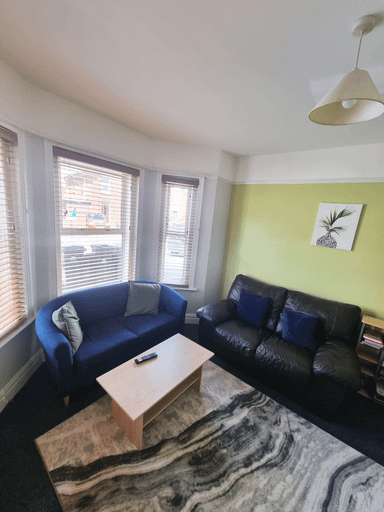Our guide to Painting & Decorating
Here are our four steps to improving your home/office
Colour Choice & Advice

Why are colours so important?
Colours can draw out different emotions and affect us in many different ways. They have the ability to create specific moods and are a good way to express individuality and creativity.
How do I choose a colour?
60-30-10 rule
The 60-30-10 rule gives you an easy way to choose a colour palette and stick to it. When done well, it can also help establish an identity. With this rule, you use a dominant primary colour 60% of the time; a secondary colour 30% of the time; and an accent colour 10% of the time.
How do I choose colours that go together?
Begin with your chosen colour, look across the colour wheel for its direct complement — instead of choosing that colour, pick two analogous colours on either side of it.
So, for example, if your first colour is yellow-orange (AKA Amber/Gold), look across to Blue-Violet, but choose Blue and Violet as your second and third colours.

How can Fine Lines help me pick my colours?
We carry with us colour swatches from a number of big brands such as; Dulux, Valspar, F&B & The little Green Company. Do you have a particular preference? Or are you looking for a certain colour, but can't quite remember what the name of that paint was?
Not a problem.
The Design Process
Mood boards and colour theory
Mood boards are a great way of saving ideas and making a visual chart of how you want your room to look. Look at the tones and colours that enhance any furnishings that you will be keeping. Doors and windows can be included, whether they are wood or painted or maybe wood that you wish to paint. Save any images of similar spaces and work out what it is you like about the design. This could be the colours of the walls, how the light is used and any design features that appeal to you, or it could be simply the general atmosphere of the space.
Planning a bespoke design
We can use photoshop software in our design process to translate our ideas into a visible plan to send over to the client when we are in the design process. The planning and preparation pays off when it comes to the timing of the physical work, which we can estimate very closely to provide a completion date.
For our bespoke hand-painted mural designs , these can also be created offsite for commercial projects that do not want to disrupt daily business, by using high quality canvas that can be installed very quickly at a convenient time.

Choosing the right finish
When it comes to picking the right paint finish, there are a few key factors to consider.
First, think about the space you will be painting. If it's a high-traffic area, like a hallway or kitchen, you'll want to opt for a shiny finish. This type of paint is more durable and easier to clean, making it ideal for areas that see a lot of foot traffic.
On the other hand, if you're painting a bedroom or living room, you might want to go for something more subtle. Matte or eggshell finishes can give a room a sophisticated, muted look. These finishes are also great for hiding imperfections in the walls and ceilings, and they tend to be more forgiving if you make a mistake while painting.
Another important factor to consider is the type of paint you'll be using. Oil-based paints tend to have a shinier finish than water-based paints, so keep that in mind when making your selection. Additionally, some paints are designed specifically for high-traffic areas, so be sure to read the label carefully before making your purchase.
Overall, by taking into account the space, amount of traffic it receives, and type of paint you're using, you can confidently select the best option for your project.
Preparing your space
Before you can begin painting, some critical preparation steps must be taken to ensure the best possible result. Here are some vital steps to follow:
- Remove any loose paint and fill any holes or cracks on your walls.
- Clean the walls and trim to remove grime, cobwebs, dust, and stains that may prevent your paint from adhering.
- If you're not confident with a brush or roller, you can use tape to cover areas you don't want to paint.
- Lay your coverings to protect your floor from paint spills and splatters.
- Apply primer before painting to ensure even coverage and better adhesion.
- Use caulking to seal gaps and cracks between the walls and trim.
Top to Bottom
We recommend you start your decorating project at the top and work your way down to the bottom. This way, you can prevent any accidental drips from ruining any freshly painted areas. Additionally, it allows you to address any mishaps or mistakes as you go, rather than having to start all over again.






















